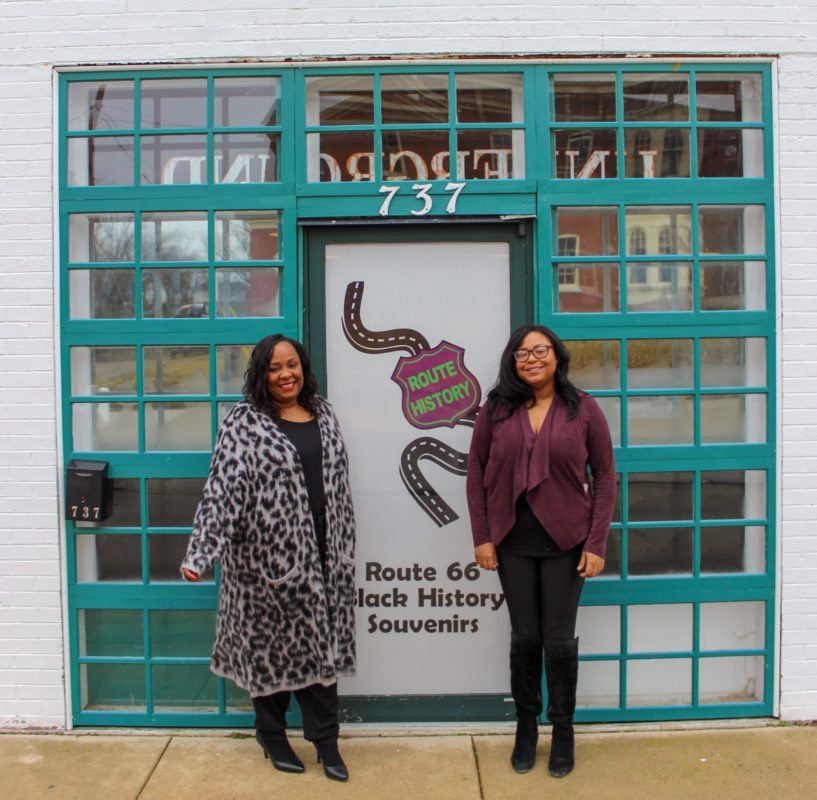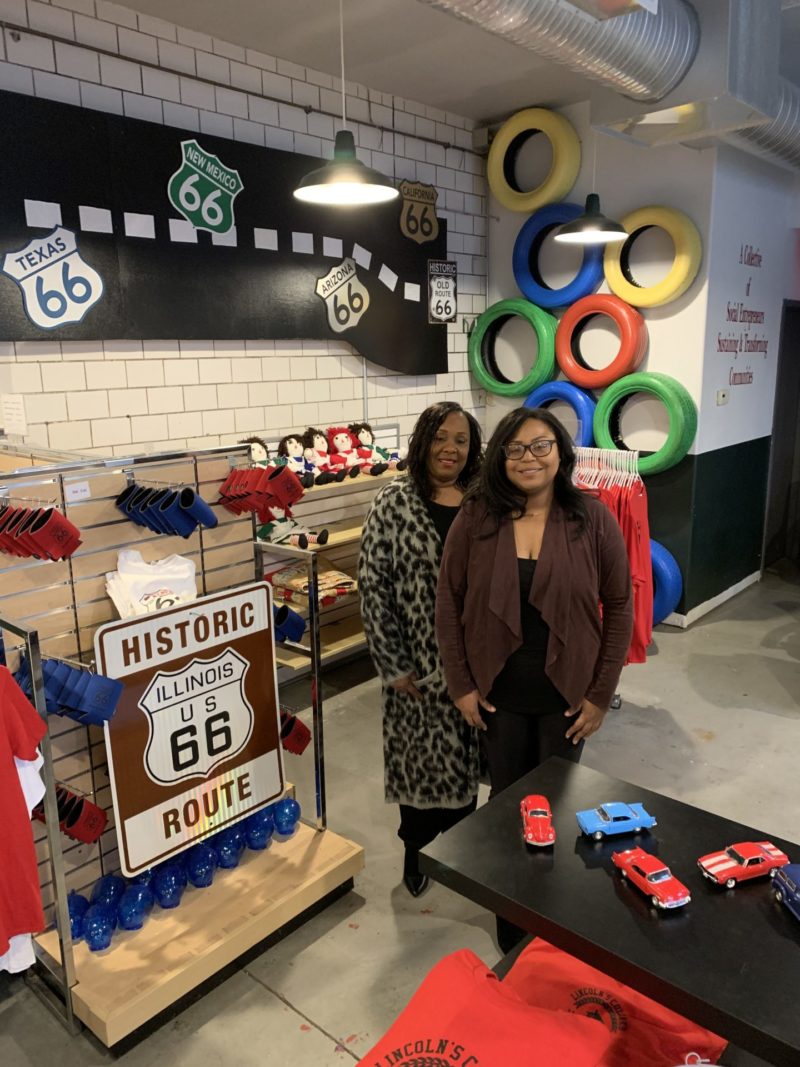FEBRUARY 24, 2020
(This article originally appeared in the February 2020 edition of The Arch newsletter)
As Gina Lathan, President of Route History, Inc. in Springfield pointed out, history in our state’s capitol is frequently linked to Abraham Lincoln or Route 66. The African American perspective is often missing. Route History, Inc., opened last year as a museum, visitor center and shop dedicated to sharing the often forgotten or unknown stories of African Americans along the historic highway and in the city of Springfield. Landmarks Illinois Board Members were treated to a tour of the museum in May 2019. And, last month, Landmarks Illinois asked Lathan, along with and Stacy Grundy, Vice President of Route History, Inc., to share more about their mission and the stories they aim to tell.
LANDMARKS ILLINOIS: Tell us about the focus of Route History and why it is important?
GINA LATHAN: Route History tells the untold stories of local African American history, including the city of Springfield’s role in the Underground Railroad and the Black entrepreneurs who played a big part in it, the 1908 Springfield Race Riot and how the city was a safe haven for Black travelers during the Jim Crow era.
Route History also celebrates and recognizes Eva Carroll Monroe’s role in founding the Lincoln Colored Home, the first black orphanage in the city of Springfield and the state of Illinois. Furthermore, Route History highlights the appreciation of math and science in the Black community in the early 1900s and the Ambidexter Institute, an industrial school patterned after Booker T. Washington’s Tuskegee Institute, which emphasized teaching math, science and a trade.
Ultimately, we want to ensure that the contributions African Americans have made to the city of Springfield and the state of Illinois are recognized, celebrated and remembered.
LI: How are you telling these stories at the Route History museum and shop? Are there specific exhibits you are particularly proud of or excited about?
STACY GRUNDY: We sought to make Route History an engaging space where people of all ages could experience and learn about the tragedy, resilience and excellence of Black people along the Historic Route 66 and in the city of Springfield Illinois. We use exhibits, digital media, events, educational materials and collectible items to educate, train and engage people of all ages using positive and relevant images and experiences.
This fall we implemented our Junior Historian curriculum in partnership with the Springfield Urban League 21st Century program. Through this curriculum, the students learn about the significance of Route 66, the Negro Motorist Green Book and Black historical treasures such as the Lincoln Colored Home, Springfield’s Black Firehouse and the Ambidexter Institute.
We are very proud of all of exhibits as they all share a piece of the Route History experience. For instance, our “Windows to History” exhibit tells the story of the Great Migration, how Jim Crow affected African American life and the significance of Black businesses. We are especially excited about a new exhibit that will be released in the spring where we will be recognizing the three Black men who were conductors on the Springfield leg of the Underground Railroad.


